🔮 What (Digital) Audiences Want in 2025
How online behaviors will shape 2025 marketing. Prepared by Arcade.
Hey Scanners!
2025 is shaping up to be (once again) a year of major shifts as we navigate real life (for example, AI becoming part of our everyday lives, global economic and political uncertainty, and social platforms that seem determined to own our attention). It's a time when audiences are looking for authentic ways to cope and connect, even as the digital landscape keeps transforming beneath our feet.
Whether you're crafting content, showing up as a creator, or building communities, there's never been a more interesting time to explore how we engage with each other online. Reading these trends, you'll discover what audiences want right now – spoiler alert: it builds on what we've seen before (our 2024 Report still applies), but with some fascinating new twists that reflect our changing world.
Are you ready? Let’s dive in.
– Alyssa Yuhas, Arcade’s Futurist in Residence / LinkedIn
👀 TREND 01
They want to be seen
People want:
Products and content that feel bespoke
Representation across demographics
Personalized experiences
Age diversity in campaigns
Inclusivity across gender and body types
Acknowledgement of cultural backgrounds
What’s happening?
In 2025, digital audiences want to be part of the action; whether it’s a brand fandom or an online community, they love feeling included. But they don’t just want to feel like just another follower. They need their unique values and identities recognized (and not tokenized) to feel seen. Brands that get this right celebrate cultural experiences in global campaigns, launch features that tailor an experience to the user, and even introduce hyperlocal advertising and IYKYK moments. Easier said than done? Not if you’re genuinely paying attention to your audience’s interests.
Why does it matter?
One of the core ethos of marketing is personalization, yet we, as marketers, can have a bad habit of choosing to make campaigns “general” to “appeal to more people.” This can have the opposite effect, where no one feels particularly seen. Companies like McDonald’s have gone hyper-niche in their campaigns, celebrating sub-cultures that aren’t usually featured. While you may not be able to execute a campaign to the same level as McDonald’s, you have ample tools to learn what your audience experiences. Hop into a Reddit thread. Use social listening. Pay attention to who your digital audiences follow. Even simple campaigns have the potential to make a splash with the right core messaging and a real target person in mind.
What this could mean:
💻 For content: Your audience wants to see their backgrounds and interests celebrated online. What can you do to highlight these in a meaningful way? Celebrating a special holiday or promoting a niche event that connects to your audience could go a long way!
🤳 For creators: Social listening is key to presenting a relatable, relevant online persona. Are you paying attention to what your audience is thinking and feeling, and responding in turn? Showing up in the comments and replies with thoughtful responses may be the first place to start.
👥 For communities: People are hungry for connection. Finding others that share their interests, backgrounds, and/or values is a high priority. In your community, what can you do to better foster niche connections?
What we’ve observed
📅 CURRENT / YouTube Is Creating Technology That Allows Creators to Find Content Using Their Likeness
😲 SURPRISING / L’Oréal’s New Cosmetics Counter Device Can Predict Your Skin’s Needs
🎯 SPECIFIC / Google’s AI-Powered Shopping Features Virtual Try-Ons & Dynamic Filters for Personalized Shopping
See how the signals connect.
👀 TREND 02
They want realness
People want:
Transparent communication
Emotional connections
Storytelling, nostalgia, and relatable branding
Campaigns with aspirational figures
People over polish (messiness is in)
Unscripted moments to cheer for
What’s happening?
Generative AI has exploded over the past couple of years. The technology went from being a relatively novel concept to a part of everyday life in what felt like a few short months. What we’ve been left with on social media, though, are algorithms that feel forced, basic, and even confusing. Digital audiences are fighting back, shaming companies that lean too heavily into AI practices, and celebrating “realness” and “humanness” from creators, celebrities, and brands (as long as it doesn’t stray too far into “trauma-dumping” land). It’s not that AI is the issue, per se; it’s that AI has acted as a catalyst for flat, uninspiring content.
Why does it matter?
Words like “authenticity” or “real” flare up in the lexicon from time to time, often to the point they can feel like buzzwords. However, when it starts to gain this amount of traction, it’s essential that we, as marketers and creators, take a close look at what we’re putting into the digital ecosystem. Consumers know when something is AI generated, which has them on alert while they’re scrolling. Content that stands out in 2025 needs to feel real. Great storytelling, messy moments, and real people are all things that can help. Caveat: within reason. We all love a TikTok tell-all until we don’t).
What this could mean:
💻 For content: Emotion is key for connection. When creating content, consider what you can do to create a stronger emotional connection through storytelling, nostalgia, and relatable branding.
🤳 For creators: It’s so easy to find creators that feel the same online. In 2025, standing out means letting go of trends and leaning into your individuality. How can you better show that in your content (and, in turn, help others feel seen)?
👥 For communities: Community is great, until it feels like you’re anonymous in yet another space. This year, think of ways you can make your community feel like a real experience instead of just another online space.
What we’ve observed
📅 CURRENT / Meta Is Killing Off Its Own AI-Profiles
😲 SURPRISING / 54% of Long LinkedIn Posts Are Generated By AI
🎯 SPECIFIC / TikTok Blocks Certain Beauty Filters for Teen Users
See how the signals connect.
👀 TREND 03
They want shared moments
People want:
Intimate, community-driven interactions
Platforms that feel like safe, creative spaces
Opportunities to participate in co-creation
Fandoms and niche groups
Moments of monoculture
Communities that celebrate shared interests
What’s happening?
In 2023, people just wanted to get together. From this sprung a new fascination with group activities (mainly sports). In 2024, social media platforms changed their algorithms to favor group chats. Now, things are going a step further. In 2025, shared moments are less about doing anything and more about what you're doing. There's still a desire for these collective moments, but it's even better if they offer an opportunity to be part of the larger social media dialogue. People spent thousands on The Eras Tour… while smaller festivals and local music suffered. People built at-home cafés… that could be posted in an aesthetic Reel. And people read books… that they could then review on Goodreads. Shared moments that ladder up to additional social moments are key.
Why does it matter?
It's almost impossible to have monoculture, but it doesn't mean we don't crave it. We want to know what's happening, to get the invite, and to understand the meme. The right event can make you feel included even if you're solo in a crowd. While engaging in activities just because they're popular online may seem frivolous, these experiences are rare opportunities to feel like you're part of something in this big, busy digital world. The brands and creators that will have success in 2025 will know how to tap into these moments and create something worth engaging in.
What this could mean:
💻 For content: Content that helps people feel like they’re in the moment (or at the forefront of something new) creates a moment of shared connection. How can you start an inside joke, discuss a common interest, or help people learn what’s coming next?
🤳 For creators: Moments of monoculture are few and far between these days, but creators have an opportunity to help make them happen. Could you host an IRL event for your followers? Or plan a meetup at a larger event (like before a concert or sports game)?
👥 For communities: Communities with experiences both online and off offer opportunities for members to continue their experience. Where can you create opportunities to connect with a physical experience? Or expand on a digital one?
What we’ve observed
📅 CURRENT / Gen Z Is Ushering In a Dinner Party Boom
😲 SURPRISING / 60 Million Households Watched the Mike Tyson v Jake Paul Fight Live
🎯 SPECIFIC / Live Nation Had Its Biggest Summer Concert Season Ever
See how the signals connect.
👀 TREND 04
They want to play
People want:
Unserious fun
Parallel play
Gaming, sports, and hobbies
Silliness and levity
To enjoy their curiosity
To find a passion
What’s happening?
In 2024 digital audiences were desperate for a real-life thrill. This, combined with the need to combat digital fatigue and escape from the state of the world, has led to a general resurgence of fun being a top priority. People are learning new skills to use in playful ways (have you seen the “rat cake” trend?). Pickleball basically took over the summer of ‘24. Games that are 20+ years old are being re-released, taking people back to their more playful, younger years. And, on a perhaps more irresponsible side of the spectrum, Gen Z is prioritizing fun over finances. 2025 is all about getting serious about play.
Why does it matter?
People are looking to make their life fun as a form of escapism instead of 2024’s classics: bed rotting, sad beige aesthetics, soft living, and numbing on Netflix. This creates ample opportunities for brands and creators to get in on the (literal) fun. People are taking time to learn hobbies, explore passions, and live creatively. Essentially, they’re looking for longer-term strategies to make life enjoyable. There’s a movement away from overstimulating content and toward discovering real passions. The brands and creators that get this will be able to leave a mark. Being playful, experimenting, and having a “not so serious” attitude is where it’s at with this trend.
What this could mean:
💻 For content: Stuffy content is out. Digital audiences want to see brands and creators having fun with their content and marketing. It might be time to commit to the bit and get a little silly; where would this be easiest to start?
🤳 For creators: It can be hard for creators to always show up in a way that is uplifting and unserious because life happens. That being said, is it possible you’re holding back from showing a more playful side? Bringing this out could help audiences relate to you more.
👥 For communities: People are interested in connecting through laughter, jokes, memes, and more – especially online. How can you create moments of connection for your community that are light-hearted and fun?
What we’ve observed
📅 CURRENT / Bingo Might Be What Your Nightlife Is Missing
😲 SURPRISING / Fashion Isn’t Just for Earth Anymore
🎯 SPECIFIC / People Weren’t Talking Football at College Football’s Unhinged Pop-Tarts Bowl
See how the signals connect.
👀 TREND 05
They want ease
People want:
A sense of stability
Reliable relationships with brands & creators
To be taken care of
Healthier indulgences
Low-stress tech
Aesthetic self-care
What’s happening?
Old, low-tech gadgets have been returning to pop culture at a surprising rate. Between anti-smart phones, cassette players, and even pagers – it’s feeling a bit freaky out there for anyone over the age of 30. And it’s not just tech; magazines (like Life and Vice) and book clubs have also gone through a resurgence. When combined with younger generations’ prioritization of everyday essentials over luxury goods, functional wellness products, and abandonment of alcohol (because who needs the hanxiety), there is this deep desire for ease that has emerged.
Why does it matter?
Picture your audience as someone who wants to be taken care of and do the work to give them that ease. Life is busy, whether you’re online or off, and people crave things that make life a little easier. Low-tech gadgets and long-form content like magazines, books, and blogs are relatively easy entry points. When people are online, content that is comfortable and simple helps create a low barrier to entry. This is not about gatekeeping. It’s about helping your audience easily get your quick tips, recipes, lists, and links so they can move on to what’s next.
What this could mean:
💻 For content: Where are you posting your content? Platforms that require too much engagement or that overstimulate aren’t as enjoyable for audiences right now. Consider testing platforms that encourage ease of use (like the visual simplicity of Pinterest).
🤳 For creators: One size doesn’t fit all for content, but if you’re finding you’re in a bit of a slump it might be time to mix things up. Maybe it’s time to slow things down and enter your vlogging or newsletter era?
👥 For communities: Real talk: How easy is it to join and engage with your community? Are you doing everything possible to make your community experience easy? Take a close look at the process from sign-up to connection points.
What we’ve observed
📅 CURRENT / Cohousing Presents a Solution for Loneliness
😲 SURPRISING / “Vintage” Digital Cameras Are This Year’s Hot Accessory
🎯 SPECIFIC / Gen Z Is Drinking Less (But Using Cannabis More)
See how the signals connect.
READY TO PUT THESE TRENDS INTO ACTION?
We’ve made a simple workbook that helps you do exactly that.



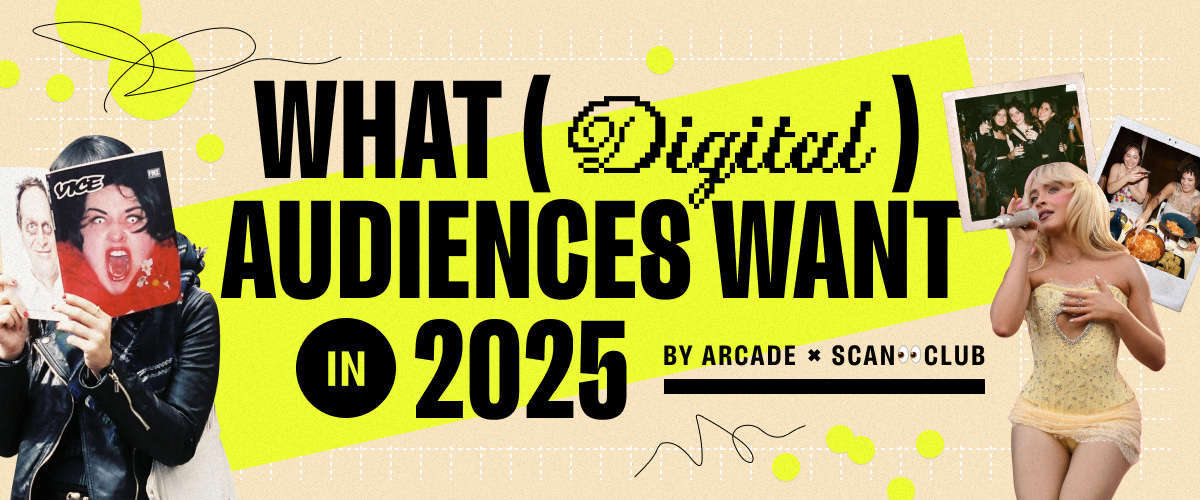
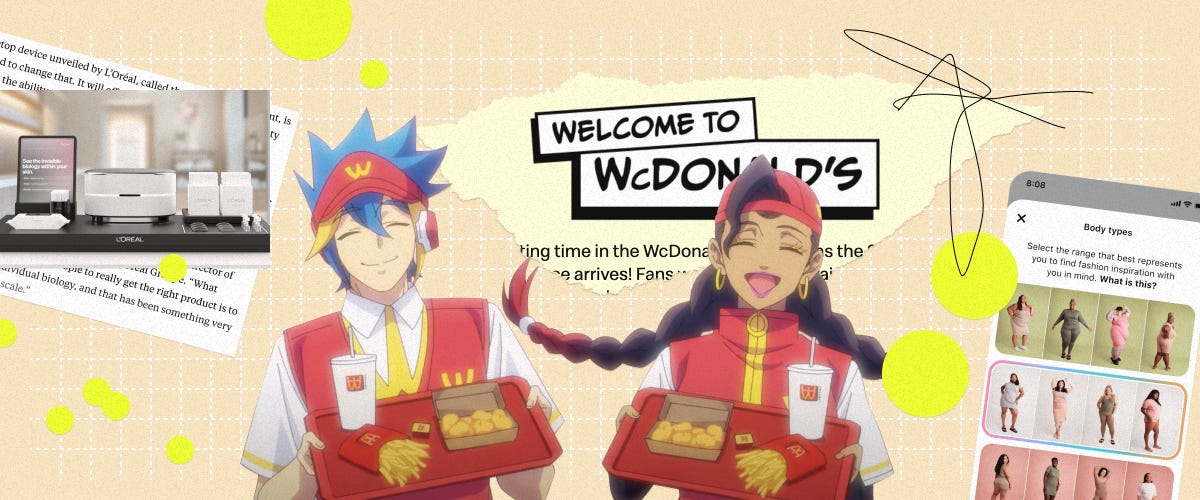
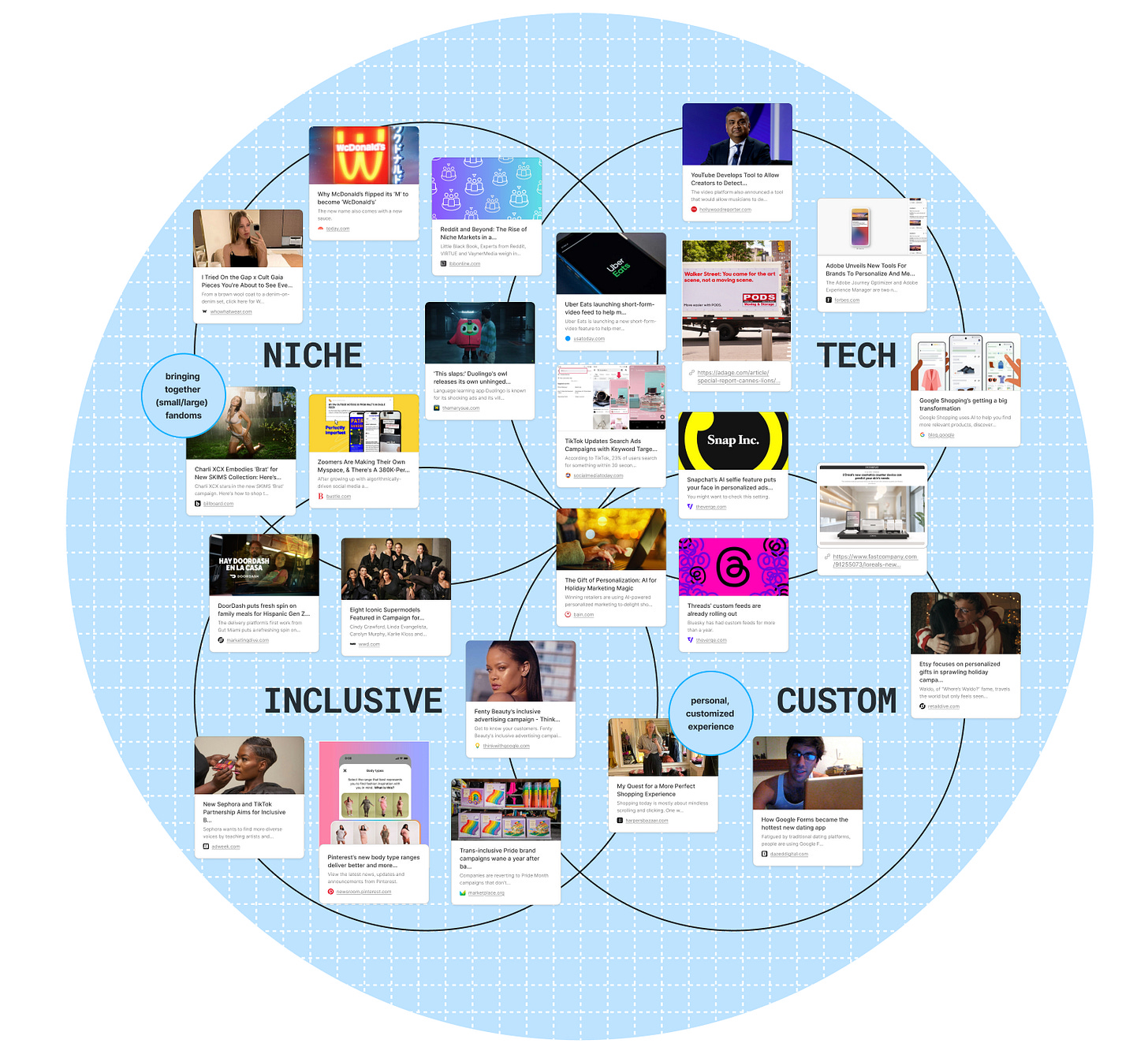
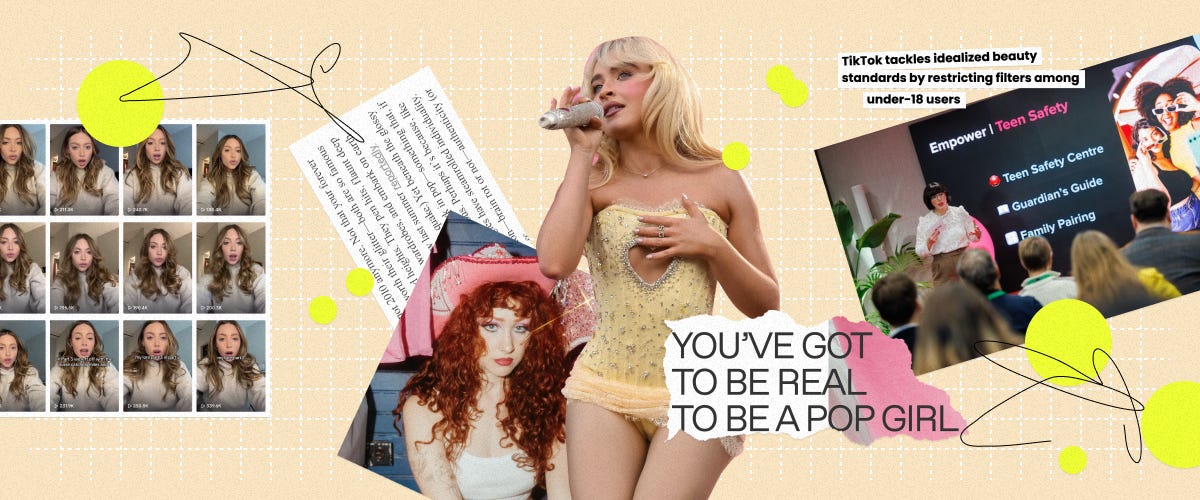
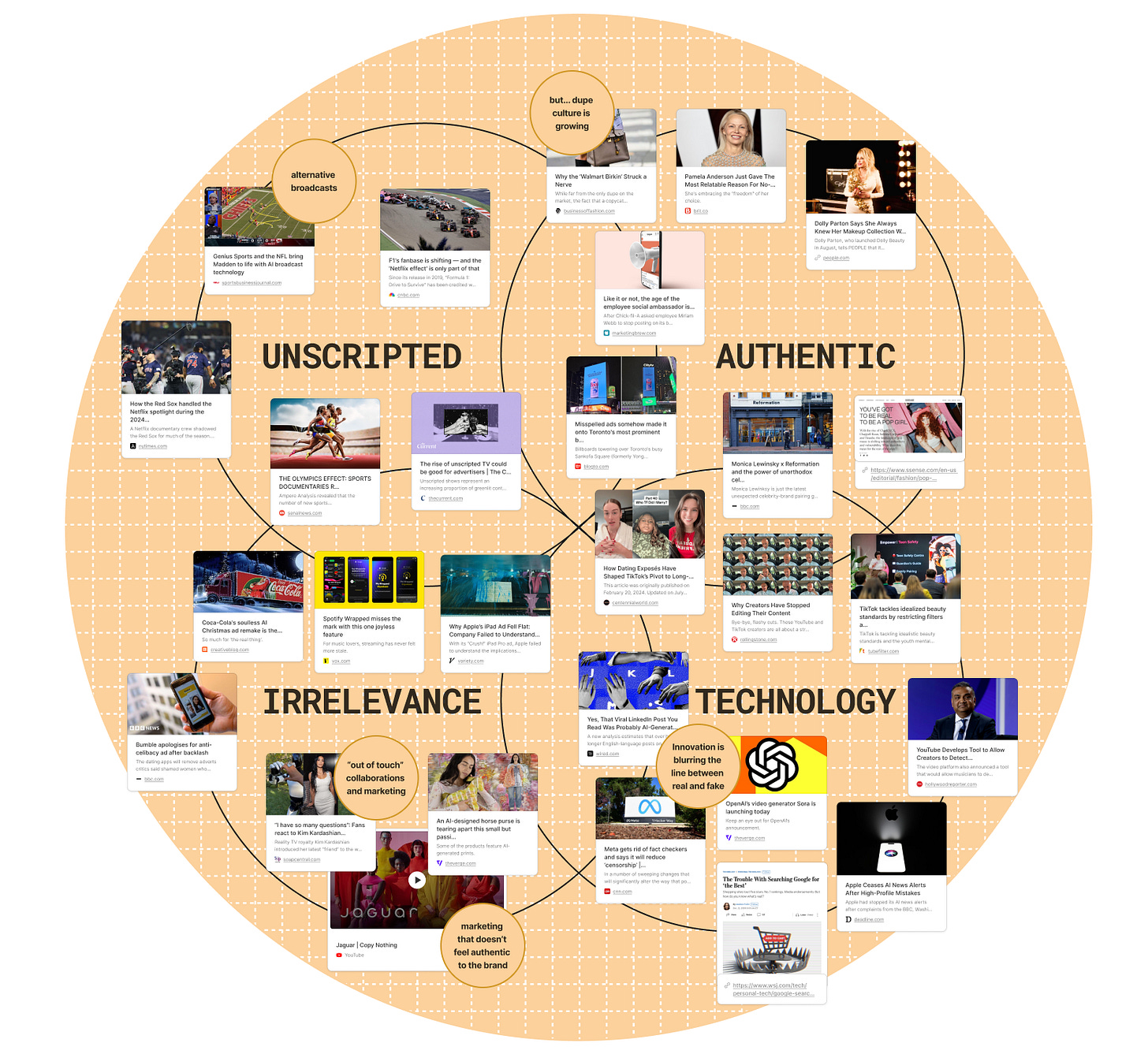
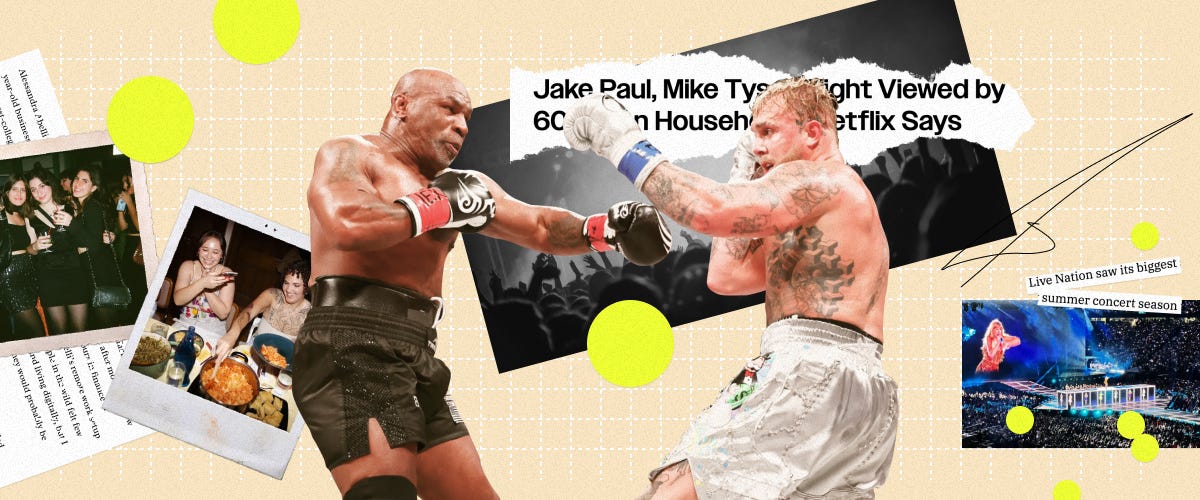
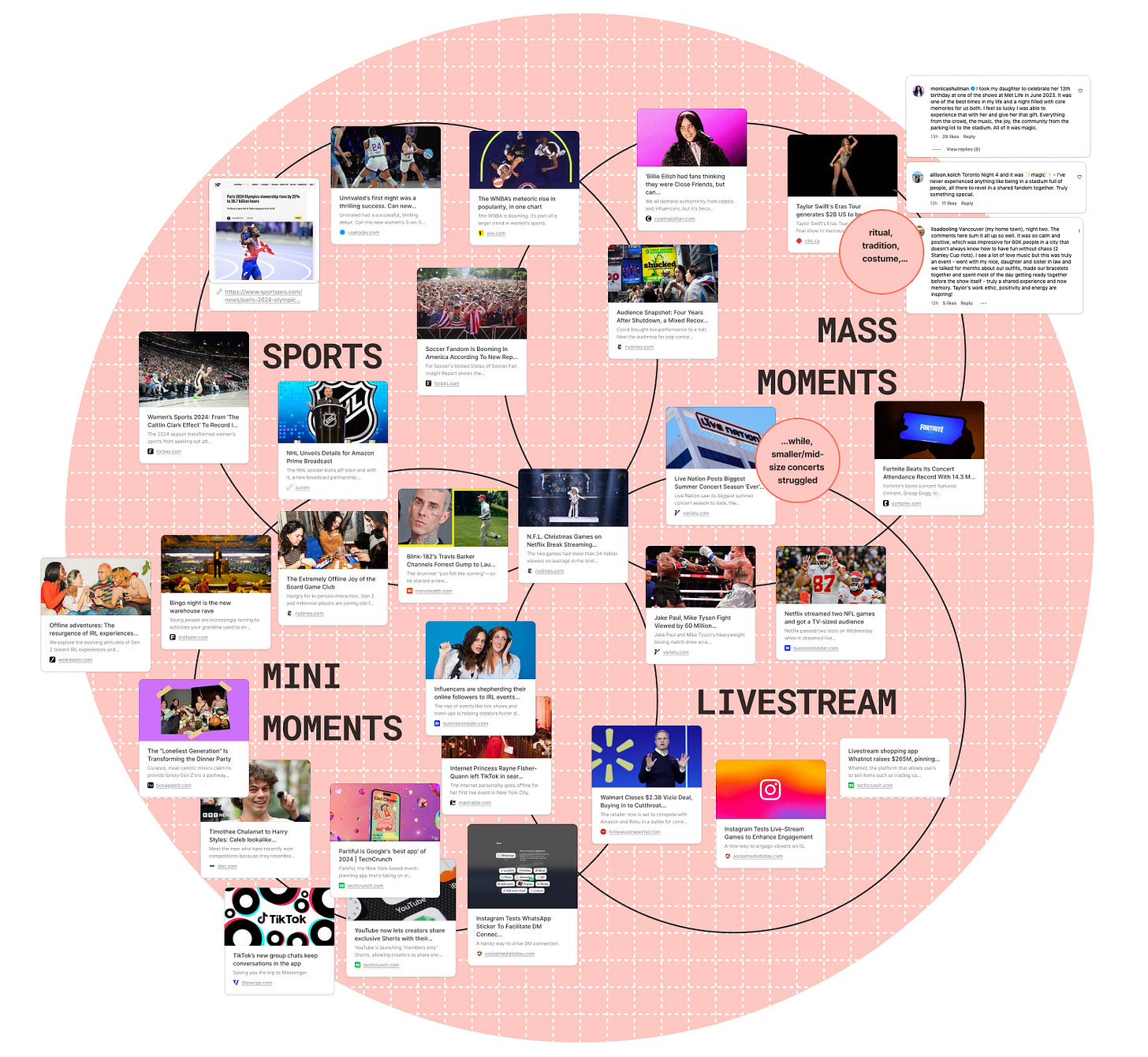
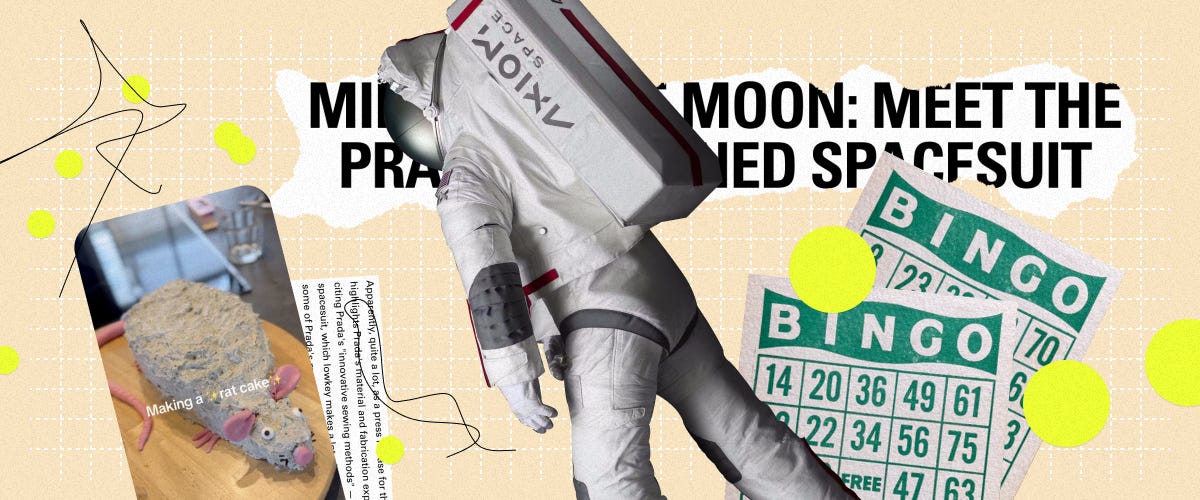
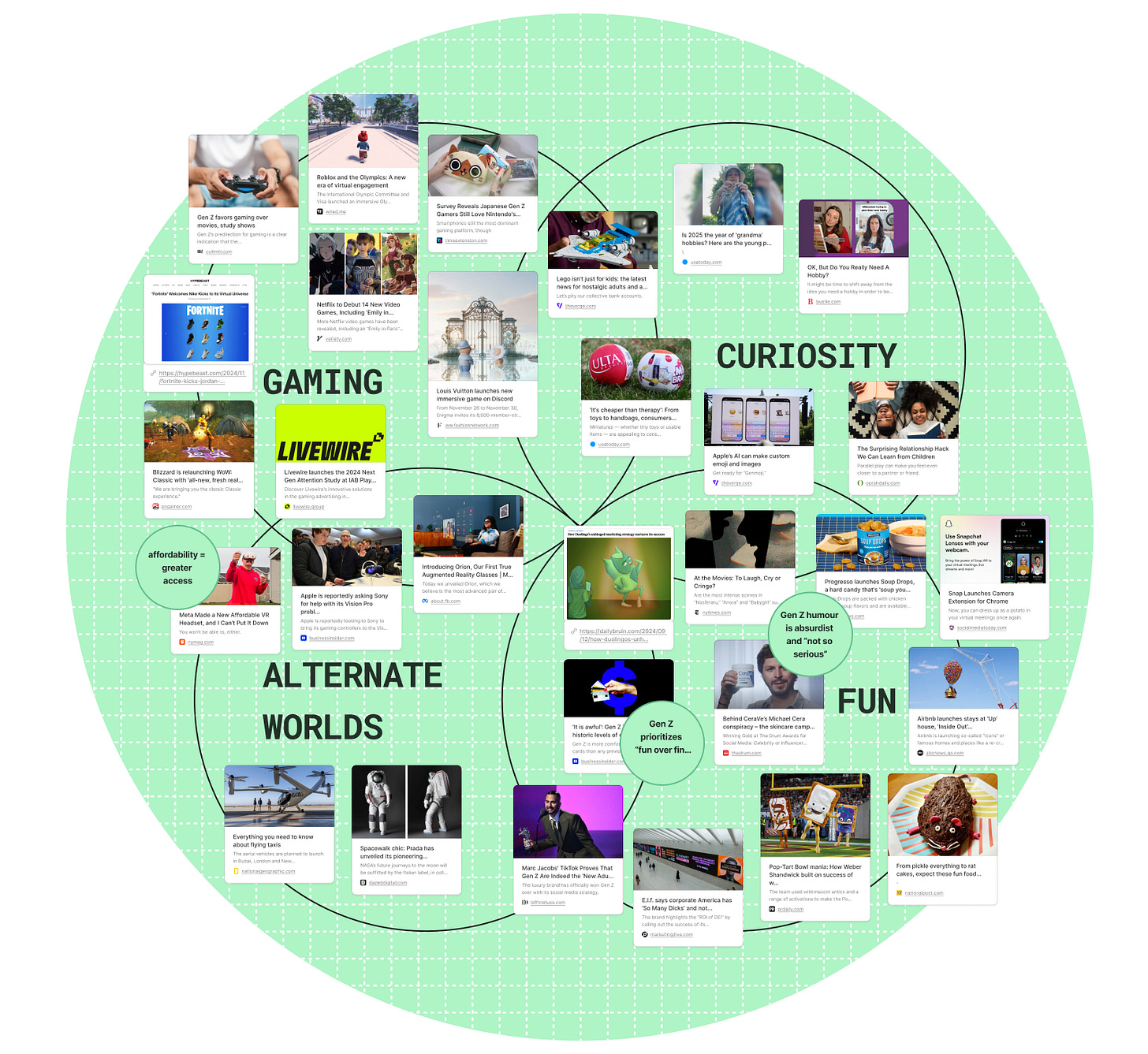
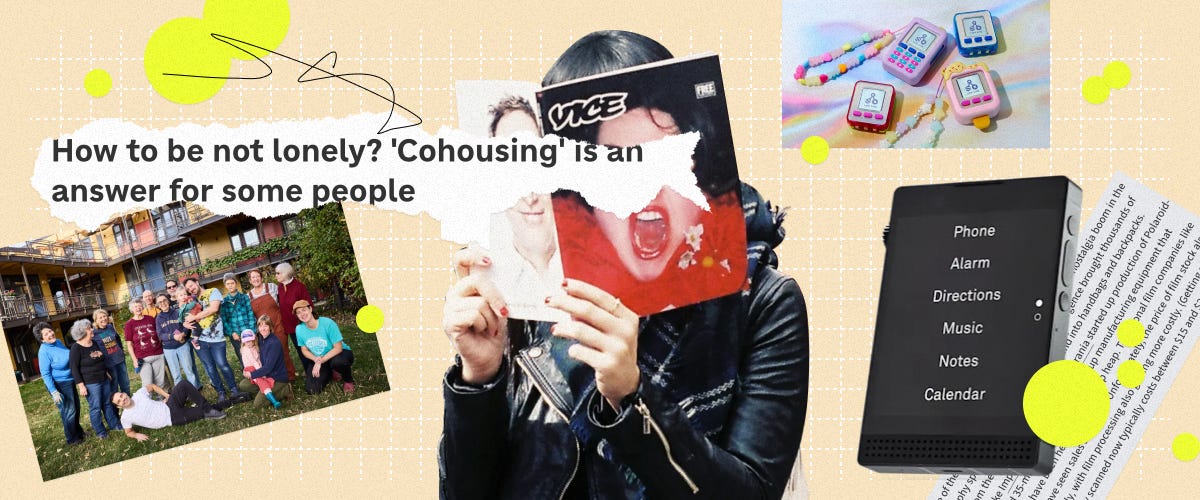
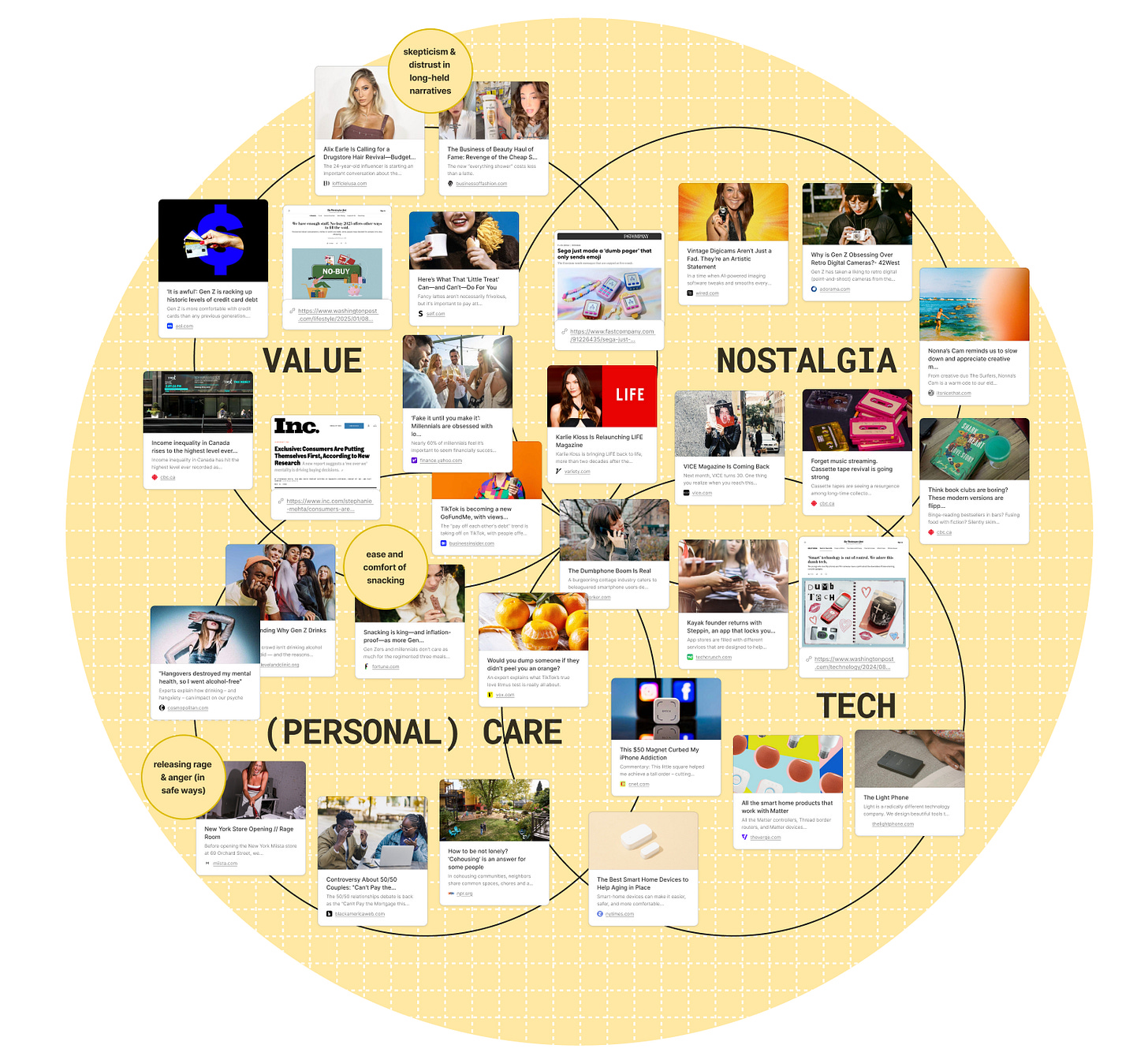
so many gems in this write up! love it.
Good insight 😌 Can i translate part of this article into Spanish with links to you and a description of your newsletter?